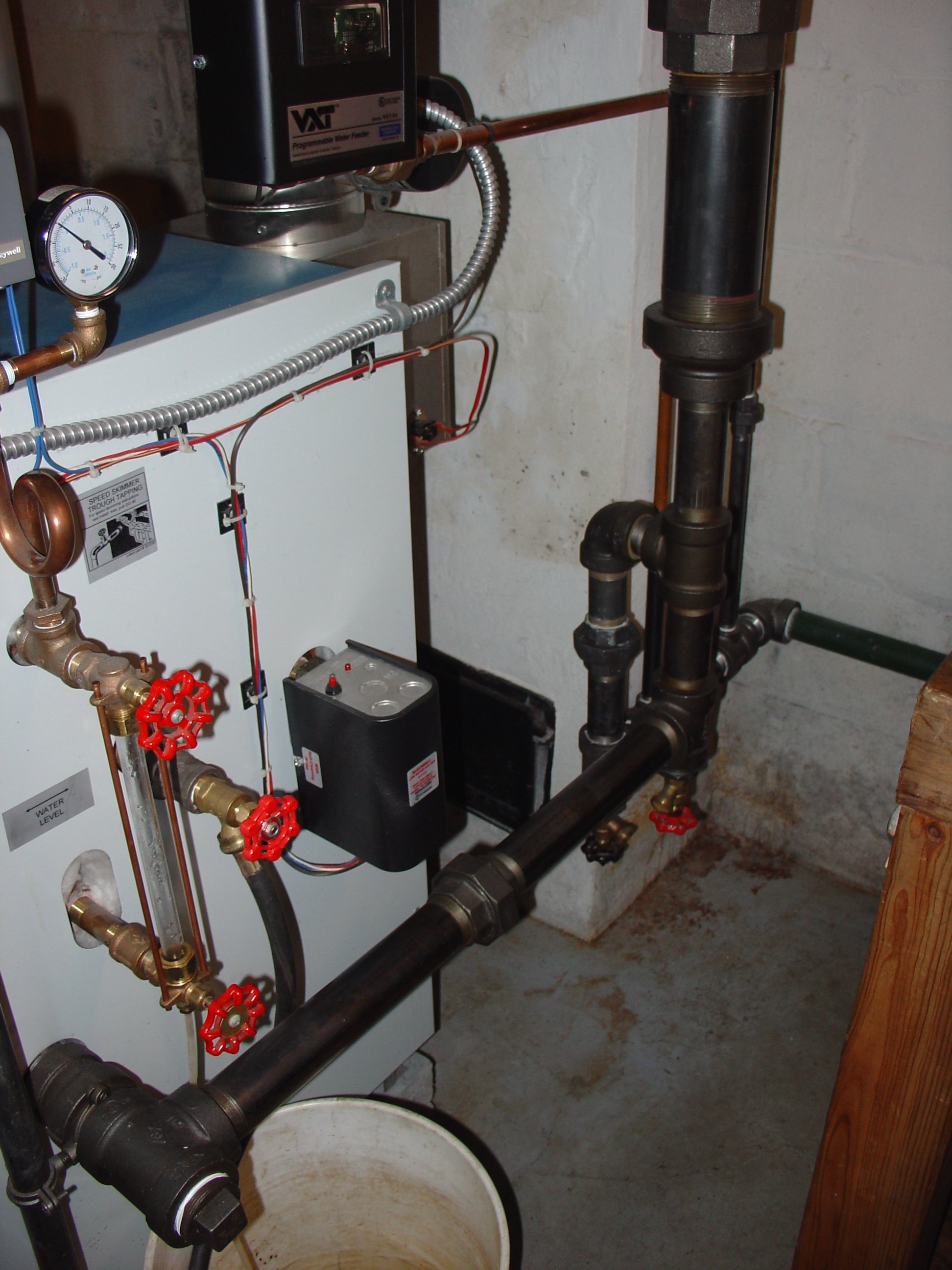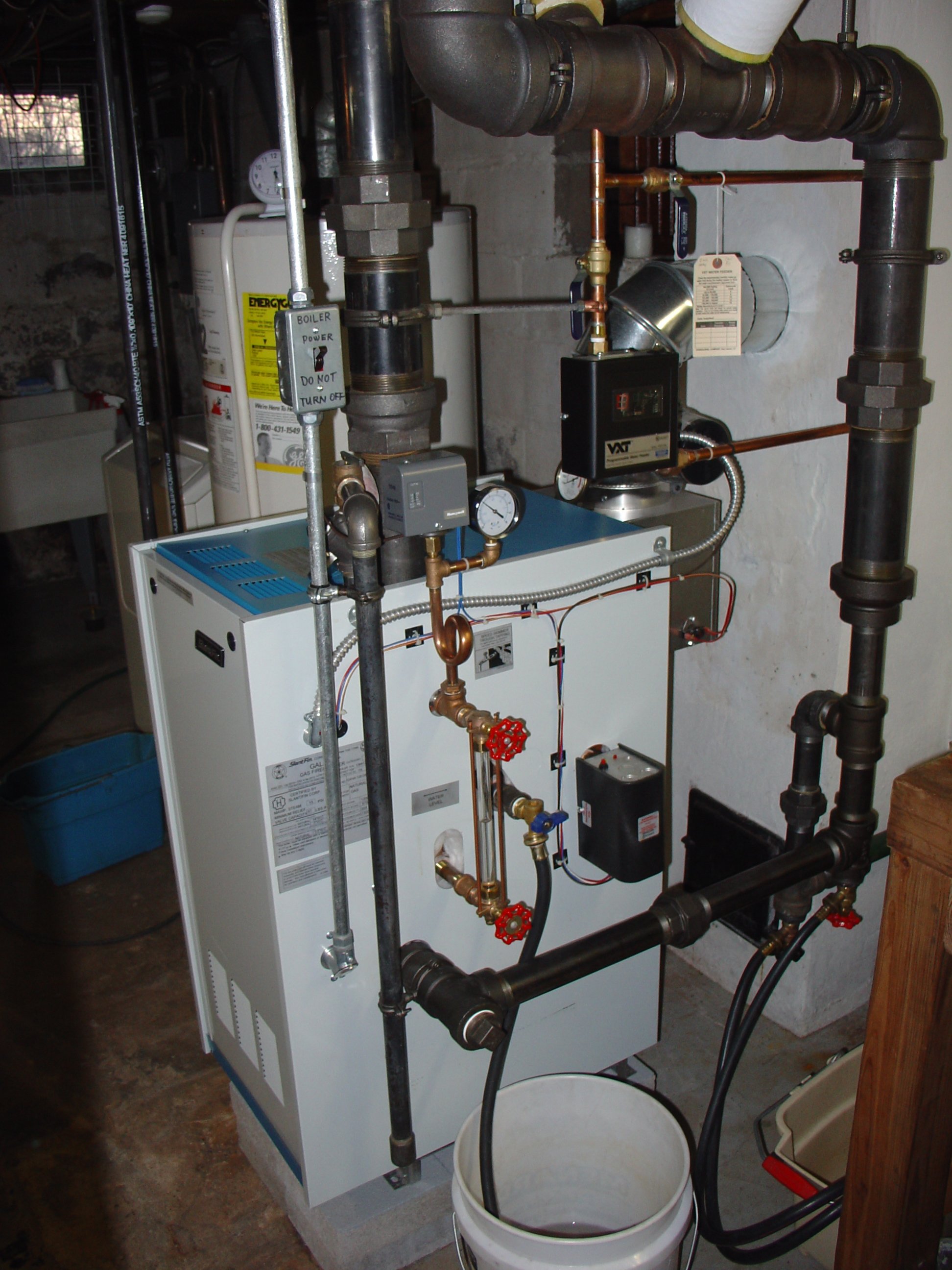Welcome! Here are the website rules, as well as some tips for using this forum.
Need to contact us? Visit https://heatinghelp.com/contact-us/.
Click here to Find a Contractor in your area.
If our community has helped you, please consider making a contribution to support this website. Thanks!
Gate valve installation in wet return; best placement
Options

Mike_D
Member Posts: 33
I am getting ready to install a gate valve in my wet return to help clean out my old wet return, and the oil and crud that I anticipate from my newly repiped installation to 3 previously disconnected radiators on a one pipe system. I have a drop down header with 3 take-offs that equalizes to the wet return via the HL before re-entering the boiler. The 1st take off is a parallel flow the ends at the wet return on the opposite side of the house and meanders the basement wall back to the boiler. The 2nd talk off is a counter flow that feeds 2 radiators (a 1st & 2nd floor). The 3rd take off is also a counter flow that feeds a single radiator on the 2nd floor, and 2 1st floor, CIBB radiators (2 pipe; air vented) which I just finished tying in. If I place the new valve on the vertical, returning side of the HL, the 1st main will drain back through the wet, but 2 & 3 will counter flow back through the equalizer and end up in the boiler (that kinda defeats the purpose). But I could also place it on the boiler side of the HL, that will stop the counter flow from mains 2 & 3, and divert the crud back into the wet return so it can also be flushed. The main difference I see, is that the equalizer is now open to the wet return. I'm not sure if that would inhibit the cleaning process especially if I open at some high pressure, or cause something else. 



0
Comments
-
That is a really neat looking installation! IMHO
Are the 2 smaller vertical pipes drips for the counterflow mains?
I have cursed every gate valve I ever installed. They can lose the gate connection and you never know it. Plus they are seldom 100% shut off for very long.
I would use full port ball valves for anything on the return. The garden hose boiler drains won't pass much crud/debris. Where you have the 2 now I would put in a drip pipe leg as long as possible with a 3/4" ball valve with hose adaptor with brass hose cap. The drip pipe will catch major debris and as you open the drain you get a visual indicator of return water condition.
Also would change one at the water line on the boiler, I assume that is used for skimming?
A ball valve in the boiler return would isolate any return debris from getting into the boiler. I believe some pipe the CW fill line into the return line on the boiler side of that valve so that the returns could be isolated for steaming production to waste the dirty flushed condensate return coming back. If you left the existing water fill line also (with an isolation valve) then you could back flush the horizontal wet return provided there was a valve at the far end of that pipe.
A valve could also be fitted into the equalizer drop after the bell reducer to isolate the entire boiler/header from power flushing with CW if you had that flushing valve at the far end of the horizontal wet return as mentioned above.
That seems like a lot of valves but they make a job easier. The easier the job is to do the more often it gets done. I would remove the handles when not in use and make it a point to exercise any valve several times once a year.
Placement of some of the isolation valves may not be code in some places, I don't know. But you sound like you understand the practicality of the system and realize the consequences of the wrong valve being closed.2 -
Those 1/2" verticals are the drips off 2 CIBBs that are fed off the #3 counterflow main; both vented, counterflow & dripped (the only 2 pipe configuration in the system) that I just finished installing. Hopefully it will work right. I've been in and out the crawl space a lot!
It sounds like I have a few options based on what way I want to clean it. I didn't think of the back-flushing idea either. I also need to move the main back off the end tee and that would be a good time to install flush valve below it. I'll probably mull over this while I'm insulting the pipes. I don't pay too much attention to codes if something makes sense, at my house. Thanks for commenting.0 -
May I just briefly second Jughne's comment on gate valves? Don't to it. Use full port ball valves. There are applications for gate valves -- a few... in very large sizes... but they are a nuisance and take a lot of maintenance to stay reliable.Br. Jamie, osb
Building superintendent/caretaker, 7200 sq. ft. historic house museum with dependencies in New England0 -
10-4 good buddy; I'll heed the warning
 0
0 -
Also, in reply to Jughne, the extension drips that you mention are, I'm thinking a better location for a magnet that I have used at the boiler entrance tee for 3 years now; has caught a lot of crud from entering. But two dirt pockets with a magnet would be even better, Yes Sir!0
-
Have you ever heard of cow magnets? They are very strong and made of stainless steel.
They are dropped down the cow's throat and stay in the first stomach and collect hardware that might be consumed by the cow. You can get them new at the Vet Supply or used at the butcher shop.
The functional use is the same for boilers or bovines.
Note: I've considered putting the cow magnets into the strainers installed on older iron pipe connected to new hot water boilers.
I may try to drill one to attach a copper wire handle as they are usually quite strong and could be hectic getting out of a CI wye strainer. In your case with the drip leg pipe, you just remove the entire pipe and end cap/reducer fitting, then use a broom handle to push thru .0 -
I haven't but I like the analogy! My magnet works well. It's caked with crude when I remove it. I don't flush as often as I should, so some gets past. I'll ask for it at feed supply in Hemlock (rural town, upstate NY). I ain't just any ordinary kinda city slicker now ya know!0
-
I believe it is pretty well a dairy cow item. BTW what do they serve at the Hemlock Bar for beverages
 0
0 -
If you're into magnets, check out some of these neodymium (rare earth) magnets you can get online. I got some to trap iron and steel particles in my pool filter. They're fun to play with. I like to show people how I can hold one in each hand and use one to make the other flip over at about three feet apart. They're incredibly strong.Just another DIYer | King of Prussia, PA
1983(?) Peerless G-561-W-S | 3" drop header, CG400-1090, VXT-240 -
I'll have to check it out just because it sounds fun, but as far as the boiler is concerned, I'm afraid my controls will go haywire and I'll never get it back out; thanks for commenting.0
-
If you get good sized ones, make sure you don't let them snap together or they will shatter, and when they break the pieces tend to repel each other and fly apart very energetically. It's kind of strange material with glass-like and metallic properties.Just another DIYer | King of Prussia, PA
1983(?) Peerless G-561-W-S | 3" drop header, CG400-1090, VXT-240
Categories
- All Categories
- 87.4K THE MAIN WALL
- 3.2K A-C, Heat Pumps & Refrigeration
- 61 Biomass
- 429 Carbon Monoxide Awareness
- 120 Chimneys & Flues
- 2.1K Domestic Hot Water
- 5.8K Gas Heating
- 115 Geothermal
- 168 Indoor-Air Quality
- 3.7K Oil Heating
- 77 Pipe Deterioration
- 1K Plumbing
- 6.5K Radiant Heating
- 395 Solar
- 15.7K Strictly Steam
- 3.4K Thermostats and Controls
- 56 Water Quality
- 51 Industry Classes
- 50 Job Opportunities
- 18 Recall Announcements

